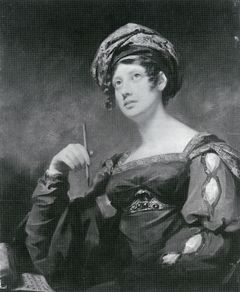Annotation:Lady Cumming of Altyre's Strathspey
X:1 T:Lady Cumming of Altyre's Strathspey C:Sir Archibald Dunbar of Northfield M:C L:1/8 R:Strathspey B:James Taylor – A Collection of Strathspeys & Reels, together with a Set of Scots Quadrilles (Elgin, c. 1835, p. 1) N:”Most respectfully dedicated to Lady Dunbar of Northfield.” Z:AK/Fiddler’s Companion K:C c>AGE c>EGA|c>AGE D>C ~A,2|c>AGE c>E G<E|A>c G/F/E/D/ D<C A,2:| c/d/e/f/ g<c a<c g<c|c/d/e/f/ g<c d>c A<d|c/d/e/f/ g<c a<c g<c|A<c G/F/E/D/ c>GA<c| c/d/e/f/ g<c a<c g<c|c/d/e/f/ g<c d>cA<d|e>gd>e c>dA>c|G/F/E/D/ c>E D>C A,2||
LADY CUMMING OF ALTYRE'S STRATHSPEY. Scottish, Strathspey (whole time). C Major. Standard tuning (fiddle). AAB. The estate of Altyre was home to Clan Cumming for 800 years. At the time of publication of James Taylor's volume the estate was held by Scottish politician Sir William Gordon Gordon-Cumming (1787-1854), 2nd Baronet of Altyre, Forres and Gordonstown. In 1815 Sir William married Eliza Maria Campbell (1795-1842), daughter of John Campbell of Shawfield and Islay and his wife Lady Charlotte Susan Campbell[1], daughter of the 5th Duke of Argyle. Eliza, Lady Cumming, was not only an aristocrat but became a noted painter, horticulturalist and palaeontologist.

Lady Cumming was a skilled painter and keen horticulturalist who took up the study of the fossils on her Altyre estate near the Moray Firth around 1839. She collected fossils and instructed workers in the quarries on the estate to bring her any they found. She collected a large number of specimens of fossil fish from the Devonian period and began a correspondence with the most famous geologists of the time; Louis Agassiz, William Buckland and Roderick Murchison all visited her collection in Scotland. She sent illustrations, letters and specimens around Europe, and intended to publish her illustrations and theories on how these fish would have appeared in life. Some of these illustrations survive in the archives of the Geological Society. Some of her ideas about how the fossil remains should be interpreted were later discredited as more fossil evidence came to light, but her illustrations were highly respected. Her work was praised by Hugh Miller: "...collected these remains and distributed them amongst geologists with the greatest liberality. Lady Cumming had studied the remains with great care, and prepared a series of drawings of all the most perfect specimens with a precision of detail and artistic talent, which few naturalists can hope to attain".
After his visit to Altyre, Agassiz named a species Cheirolepis cummingae (also sometimes spelled cummingii) in honour of Cumming. This species name was later discovered to be a synonym of Cheirolepis trialli. Many of the fossils in Cumming's collection were personally identified by Agassiz, and the collection is now held by the National Museum of Scotland, the Natural History Museum, London, and the University of Neuchatel.
Lady Cumming married Sir William Gordon Gordon-Cumming of Altyre, 2nd Baronet in 1815. They had 13 children. During her 13th pregnancy Cumming was impatient to get back to her studies, writing to Roderick Murchison "I am breathless to be at work again." However, she died on 21 April 1842 due to complications following the birth.
- ↑ After the death of her husband, Lady Charlotte was appointed a Lady-in-waiting in the household of the Princess of Wales, Caroline of Brunswich (later Queen). In 1815, the year her daughter Eliza married, she wed again to John Bury, who became a Church of England rector. Charlotte's first novel was printed anonymously in 1812, followed by another twelve. She kept a diary of life in court that was published anonymously in 1838, but widely attributed to her.

